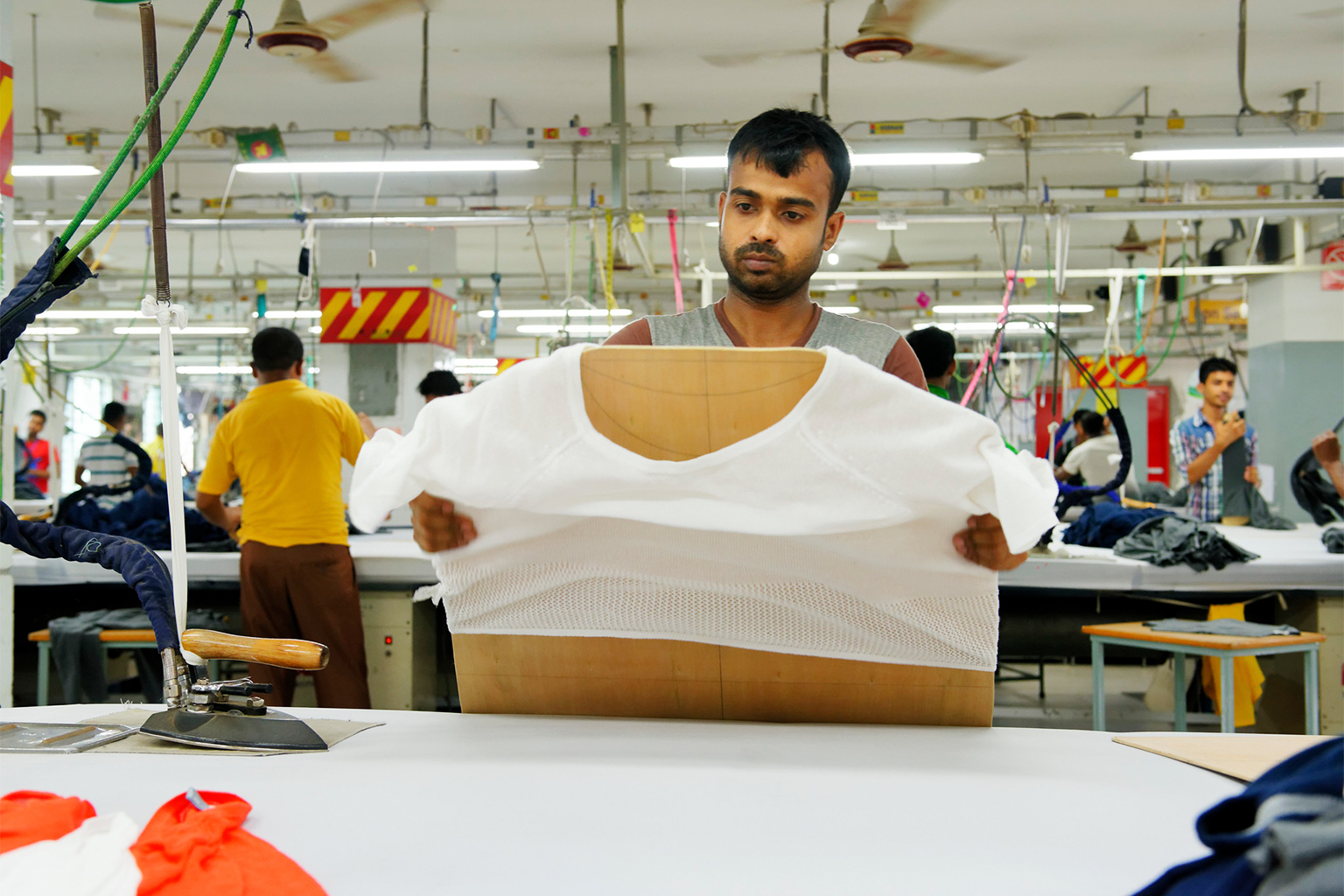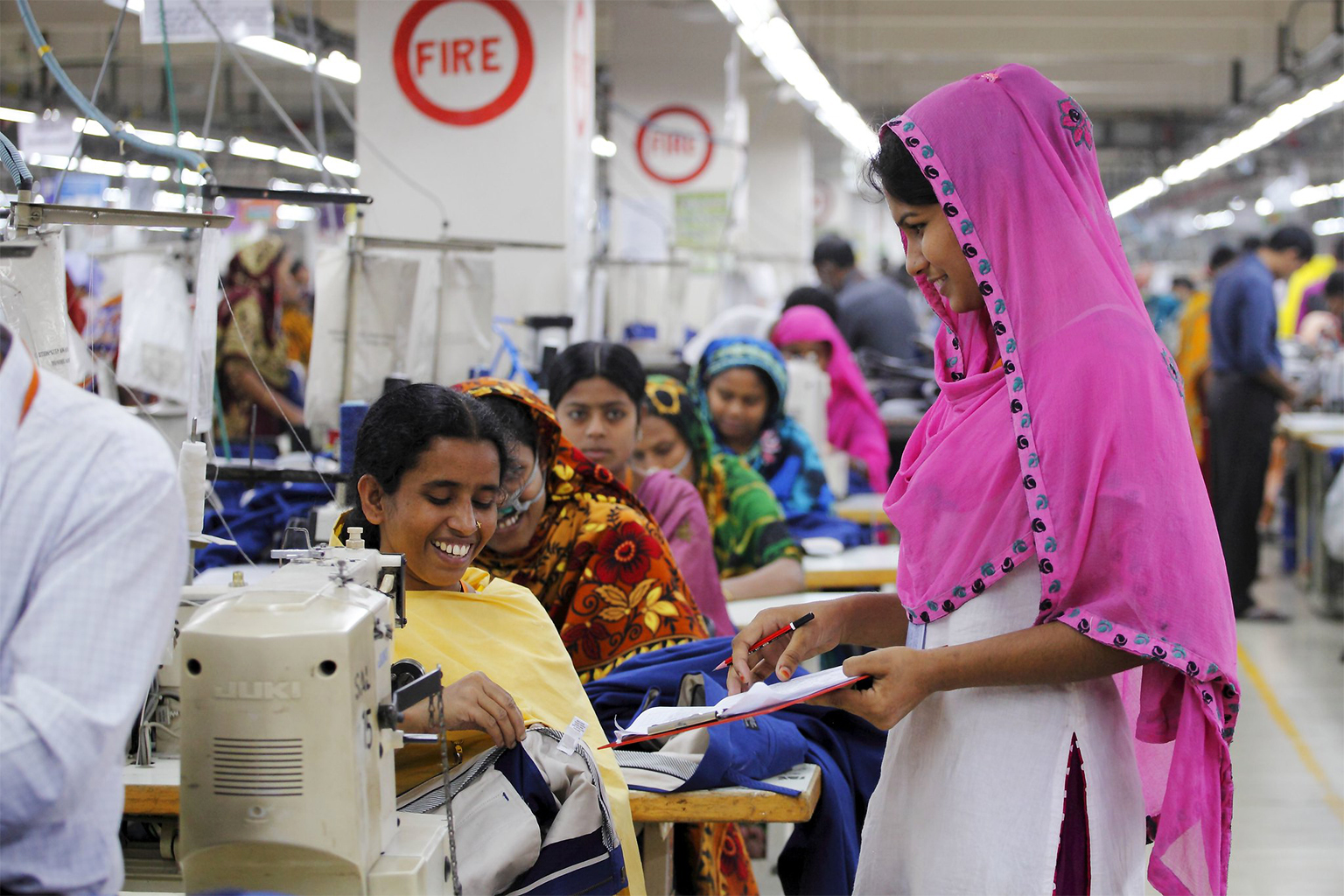Bangladesh apparel industry makes progress in ‘eco-friendly’ manufacturing
- According to United Nations Environment Programme, the fashion industry accounts for 10% of annual carbon emissions. If greenhouse gas emissions continue at the current rate, they will rise by more than half by 2030.
- Bangladesh is the second largest exporter of ready-made clothing (RMG), a $45 billion industry, with 7.9% market share. It has 4.4 million workers, mostly rural women. They are very careful to limit the impact on the environment and the carbon emissions through their green initiatives.
- Bangladesh is a shining example of sustainable and green manufacturing. It has established numerous green certified factories in the last 15-years.
- Since 2009, Bangladeshi apparel and textile manufacturers have established 202 “eco-friendly” factories certified by the U.S. Green Building Council (USGBC), the highest in the world.
Environmental pollution in the fashion industry’s supply chain is well-known.
According to United Nations Environment Programme (UNEP), fashion industry accounts annually for 10% of the carbon emissions. If greenhouse gas emissions continue at the current rate, they will rise by more than half by 2030.
The Sustainable Apparel Coalition (SAC) has set a target to reduce 45% of emissions by 2030 to help limit global warming to 1.5° Celsius (2.7° Fahrenheit).
Bangladesh is the world’s second largest exporter of ready made garments (RMG), with 7.9% of global market share. It contributes to environmental pollution and emissions of carbon.
However, the $45 billion industry, which employs of 4.4 million people — mostly rural women — puts significant effort into limiting its environmental impacts and carbon emissions through its green initiatives.
Bangladesh is a shining example of sustainable and green manufacturing. It has established numerous certified green factories in the last 15-years.
Since 2009, Bangladeshi apparel and textile manufacturers have established 202 “eco-friendly” factories certified by the U.S. Green Building Council (USGBC), the in the world.
According to the USGBC, a green factory, known as “eco-friendly,” is developed and equipped with design and manufacturing processes that efficiently improve greenhouse gas emissions and curtail environmental pollution and energy consumption.
The Green Certification is a rating system for green initiatives, such as water efficiency, reduced energy consumption, and air conservation. It also takes into account how the business will reduce its environmental impacts.
USGBC data shows that the United States is the country with the most green factories. Bangladesh, on the other hand, has the highest number of green factories.

China has 173 “green” factories and is the top exporter of RMGs. Mexico comes in second with 77. Bangladesh’s closest competitor in the apparel market, Vietnam, has 69 green factories, followed by Taiwan with 49, India with 49, Turkey with 43, Pakistan with 36 and Sri Lanka with 32. But those countries’ factories are in different categories, not only in the RGM and textile sectors.
Md. Zillur Mridha is the Managing Director at Vintage Denim Studio.
“To me, every drop of water, or a tree, matters greatly. We must take care of the Earth on which we live. Business is not to make money but to create employment and for the people’s well-being. Similarly, we can’t endanger the planet through our production cycle,” added Rahman, who leads the country’s first RMG factory with LEED Platinum certification, which it received in 2009.
Vintage Denim Studio has reduced its energy costs by 46%, its carbon footprint by 45 %, and water costs by 53 %. It produces a portion of its electricity from renewable resources.
TEAM Group, an RMG conglomerate that is growing sustainably, says it cares about environmental, social, and governance goals (ESG), and has integrated these into its business practices.
“In the present global context, the new-generation consumers, especially the millennial and Generation Z, are very concerned over the environmental and social value of the product, which is often termed as the noneconomic value of a product, which is one of the major dealing points in business nowadays,” said Abdullah Hil Rakib, managing director of TEAM Group.
“I believe a green factory complements the sustainability vision in multiple ways, like reducing environmental footprint[s], such as carbon footprint, specific energy consumption reduction, water footprint, ensuring better indoor air quality, thermal comfort and safety for workers,” said Rakib, who is also a director of the Bangladesh Garment Manufacturers and Exporters Association (BGMEA).

TEAM Group currently has two LEED certified green factories. Two more projects are on the way.
“Though it doesn’t give any extra benefit in terms of price, it is a huge pride for all of us, as Bangladesh emerged as the home of the highest number of green factories in the world.”
He added that it would change the narrative for the Bangladesh RMG Industry, which is already ranked number one in terms of sustainability.
Exporters use less water, recycle fewer chemicals, and generate renewable energy with rooftop solar panels and washing machines that produce ozone. We became lovers of sustainable manufacturers.
“As a businessman, I have the responsibility to protect the Earth for the next generation and curtail environmental impacts while manufacturing clothing items,” said S.M. Khaled is the managing director of Snowtex a LEED certified green factory.
“Responsibilities towards the environment and society drove me to establish an eco-friendly factory.”

Cost and Benefit Analysis
The cost of setting up a green plant is 25-30% higher than that of a traditional one. In addition, the cost of machinery and technology is high due to their power efficiency. In the short run, green practices are more expensive but will pay off in time.
Khaled explained that after a set period, the factory will have recouped its investment as it uses less water while consuming less electricity.
A LED light costs around 1,000 taka (9 dollars), but a tube light costs 100 taka (0,90 dollars). LED lights consume very little electricity so the return on investment is possible after a period. The use of solar panels is also an effort to move towards renewable energy.
Green-certified factories are not alone; compliant factories — factories that have taken safety precautions in terms of fire, electrical and structural safety and comply audits of buyers — have also taken different types of measures with the help of BGMEA to reduce the use of natural resources to mitigate environmental impacts.
In collaboration with the International Finance Corporation (IFC), BGMEA, and the Netherlands embassy, some Bangladeshi apparel producers adopted the Partnership for a Cleaner Textile(PaCT) to ensure sustainable management of water resources and positive environmental changes in textile wet-processing.
To stop pollution, they also launched Zero Discharge of Hazardous Chemicals.
“Undoubtedly, Bangladesh RMG sector is a leader in sustainability and environment protection as we turned the sector safeties and compliance from the disastrous incident,” BGMEA president Faruque Hassan said.
“Compared to our closest competitors — Vietnam, Turkey, Pakistan and India — and the number-one exporter of fashion goods, we housed the highest green factory in the world,” said Hassan.
We want to be the leader in reducing carbon emissions and ensuring zero environmental impact. The buyers and other stakeholders are required to participate in this process. According to the business leader, ethical purchasing practices are essential.

Collaboration between buyers, suppliers and contractors
In expediting manufacturers’ steps toward sustainability and encouraging them, buyers and brands both have responsibility to pay a better price and place more work orders.
“Manufacturers did their duties in going green to reduce environmental impacts by making a huge investment. Now, it is buyers’ responsibility to develop a cooperative mind and practice buying norms to ensure fair prices of goods,” said Khondaker Golam Moazzem, research director at Centre for Policy Dialogue.
The responsibility to protect the Earth is shared by both buyers and manufacturers. According to the economist, the government also needs to provide both financial support and policy support in order to create more green factories.
“As a company with an ambitious sustainability agenda, H&M Group — the largest buyer from Bangladesh — welcomes initiatives helping the industry move towards a circular, fair and equal textile industry,” said Ziaur Rahman, H&M Group country manager for Bangladesh.
“We don’t require our suppliers to endorse a specific environmental certification; what is important to us is that they share our ambition to shift towards circular production processes, GHG emissions reductions and taking climate action.”
As one of the company’s main priorities, it actively works with long-term suppliers in order to reduce GHG emission. He added that the company has demonstrated in its latest sustainability report how it is helping to finance GHG reductions, as well as progress made on moving towards circular production.
Banner Image: Image of tailors working in a Bangladeshi factory. Image by Marcel Crozet / ILO (CC BY NC-ND 2.0) via Flickr
Bangladesh uses recycled fabrics more in ready-made clothes